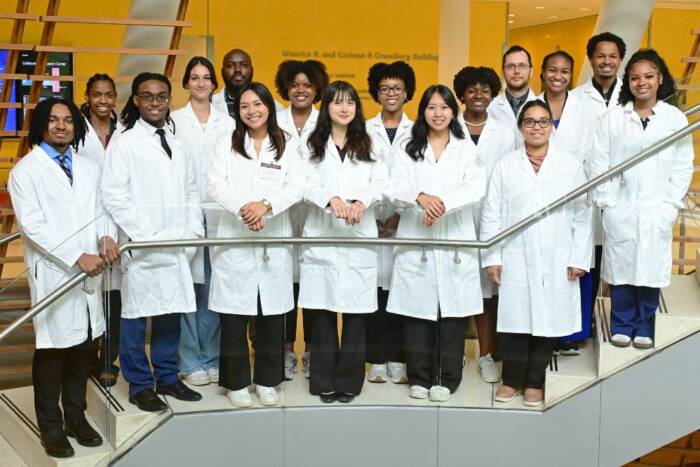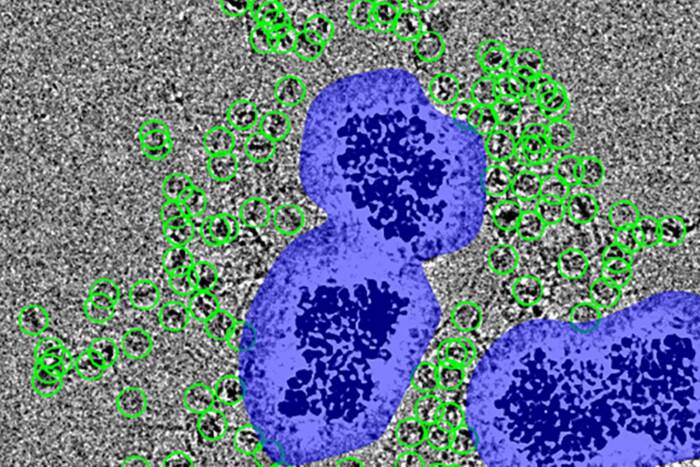How Many People Can The Earth Support?
The number depends on nature and on human choices
If the human population continued growing at the rate seen in 1990, the world would tally 694 billion people by the year 2150, the United Nations predicts. But that’s not likely, says Joel E. Cohen, Ph.D., professor and head of the Laboratory of Populations at The Rockefeller University.
By providing numbers, population projections help nations shape social and economic policies. In the coming half century, Cohen notes, people are likely to confront difficult trade-offs between population size, economic well-being, environmental quality and cultural values. Cohen plans to discuss how Earth’s ability to sustain people–sometimes called its carrying capacity–on Friday, Feb. 9, at the annual meeting of the American Association for the Advancement of Science in Baltimore, Md.
“The clear message of the projections is that people cannot forever continue to have, on average, more children than are required to replace themselves,” Cohen says. “This statement is not an ideological slogan. It is a hard fact. For example, conventional agriculture cannot grow enough food for 694 billion people–not enough water falls from the skies. The finiteness of the Earth guarantees that a ceiling on human numbers exists.”
Current world population tallies about 5.7 billion people, according to the United Nations. Population growth differs throughout the world, ranging from 1.9 percent in less developed regions to 0.3 to 0.4 percent in more developed areas. The average number of children a woman gives birth to in her lifetime, known as a total fertility rate (TFR), ranges from 4.2 children in developing countries, excluding China, to 1.2 in developed countries like Spain.
During the last 50 years, estimates of the number of people Earth can support have ranged from fewer than 1 billion to more than 1 trillion. The estimates vary so wildly, Cohen says, because they use different methods and make different assumptions about how people will be willing to live in the future.
In 1992, the United Nations projected that if 1990 growth rates continued, the world would have about 21.2 billion people in 2050. However, if the worldwide average TFR fell to 2.5 children, Earth’s population would grow to 12.5 billion in 2050. If the average rate slowed to 1.7 children, the population would increase to 7.8 billion.
While the U.N. projections are based on solid mathematics, Cohen says, the calculations overlook a source of uncertainty: while humans might reproduce at such rates, can the Earth support the billions of additional people of such a prediction?
“Scientific questions exist about whether and how the Earth can support the human population anticipated for the next century,” Cohen explains. “This uncertainty has led to public concern and controversy about whether the humankind’s future will be one of scarcity or one of abundance or a mixture of both.
“The fact is that no single number exists to answer `how many people can the earth support?’ because human carrying capacity is dynamic and uncertain,” he notes. “The capacity depends on natural constraints and human choices, which are not captured by the ecological notions of carrying capacity we use for nonhumans. Instead, we must consider in our calculations the interactions of such constraints as food, water and livable land and choices about economies, environment, values and politics.”
In addition, Cohen notes that carrying capacity also will be influenced partly by choices that current populations and their descendants have yet to make.
Cohen is the author of the book How Many People Can The Earth Support?(opens in new window), which W.W. Norton & Company published in December 1995. In the July 22, 1995, Science, Cohen published “Population Growth and Earth’s Human Carrying Capacity.” In addition to his appointment at Rockefeller, Cohen is a professor of populations at Columbia University in New York.
At the AAAS meeting, Cohen will be joined by panelists Professor Faye Duchin, Ph.D., director of the Institute for Economic Analysis at New York University, Sister Rosemarie Nassif, S.S.N.D., Ph.D., president of the College of Notre Dame of Maryland, Professor David Pimentel, Ph.D., of the Department of Entomology and Section of Ecology and Systematics at Cornell University and Paul E. Waggoner, Ph.D., distinguished scientist at the Connecticut Agricultural Experiment Station.


